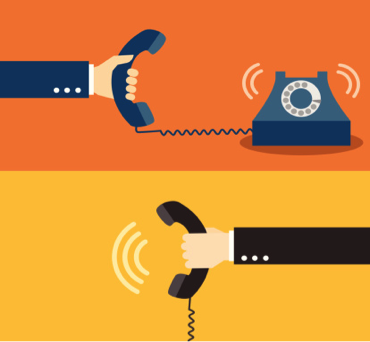Phishing is an increasingly common type of spam that can lead to theft of your personal details such as credit card numbers or online banking passwords.
Phishing attacks work by the scam artist sending “spoofed” emails that appear to come from a legitimate website that you have online dealings with such as a bank, credit card company or ISP – any site which requires users to have a personal identity or account. The email may ask you to reply with your account details in order to “update security” or for some other reason.
The phishing email may also direct you to a spoofed website or pop-up window which looks exactly like the real site, but has been set up for the sole purpose of stealing personal information. Unsuspecting people are then often fooled into handing over credit card numbers, passwords or other details.
While thinkIT monitors different layers of protection for your network and systems such as, Anti-virus software, Security and critical software patches, and network firewalls, some degree of phishing spam attempts will make it through to your mailbox. Spammers are constantly developing new methods of making their e-mails look more legitimate.
How to protect yourself:
- Never respond to emails that request personal financial information
Banks or e-commerce companies generally personalize emails, while phishers do not. Phishers often include false but sensational messages (“urgent – your account details may have been stolen”) in order to get an immediate reaction. Reputable companies don’t ask their customers for passwords or account details in an email. Even if you think the email may be legitimate, don’t respond – contact the company by phone or by visiting their website. Be cautious about opening attachments and downloading files from emails, no matter who they are from. Sophos uses SPF (Sender Policy Framework). This is an anti-forgery solution which involves publishing a list detailing which servers are allowed to send Sophos emails.
- Visit websites by typing the URL into the address bar
Phishers often use links within emails to direct their victims to a spoofed site, usually to a similar address such as mybankonline.com instead of mybank.com. When clicked on, the URL shown in the address bar may look genuine, but there are several ways it can be faked, taking you to the spoofed site. If you suspect an email from your bank or online company is false, do not follow any links embedded within it.
- Keep a regular check on your accounts
Regularly log into your online accounts, and check your statements. If you see any suspicious transactions report them to your bank or credit card provider.
- Check the website you are visiting is secure
Before submitting your bank details or other sensitive information there are a couple of checks you can do to help ensure the site uses encryption to protect your personal data:
- Check the web address in the address bar. If the website you are visiting is on a secure server it should start with “https://” (“s” for security) rather than the usual “http://”.
- Also look for a lock icon on the browser’s status bar. You can check the level of encryption, expressed in bits, by hovering over the icon with your cursor.
- Note that the fact that the website is using encryption doesn’t necessarily mean that the website is legitimate. It only tells you that data is being sent in encrypted form.
- Be cautious with emails and personal data
Most banks have a security page on their website with information on carrying out safe transactions, as well as the usual advice relating to personal data: never let anyone know your PINS or passwords, do not write them down, and do not use the same password for all your online accounts. Avoid opening or replying to spam emails as this will give the sender confirmation they have reached a live address. Use common sense when reading emails. If something seems implausible or too good to be true, then it probably is.
- Never Click on Hyperlinks in Email
Never click on a hyperlink included within the confines of an email. This is particularly necessary if the link is included in an email from an unknown sender. If a recipient feels the need to check out the website the link supposedly is associated with, that individual should manually type the URL into the web browser itself.
- Never Enter Sensitive Information in a Pop Up Window
Pop up windows represent another tool used by phishers with illicit agendas. An important tactic to prevent phishing attacks is to never enter information into a pop up window. In fact, a person is best served restricting pop up windows all together, except at those sites that an individual knows to be trustworthy.




 (7 votes, average: 3.86 out of 5)
(7 votes, average: 3.86 out of 5)